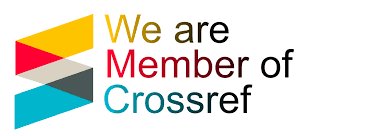EXPLORING THE POTENTIAL OF INFORMATION AND MULTIMEDIA TECHNOLOGIES IN TEACHING HIGH SCHOOL PHYSICS IN KAZAKHSTAN
DOI:
https://doi.org/10.63034/esr-28Keywords:
High School Physics, Information Technology,, Multimedia Technologies, Interactive Simulations, Virtual LaboratoriesAbstract
The integration of Information and Multimedia Technologies (IMTs) in high school physics education presents a transformative potential for teaching methodologies and student learning outcomes. This paper explores the multifaceted opportunities that IMTs offer in enhancing the delivery and comprehension of physics concepts in high school settings. Through a comprehensive review of existing literature and educational practices, we identify key areas where IMTs can significantly contribute, including interactive simulations, virtual laboratories, and digital content platforms. These technologies afford students the ability to visualize complex physics phenomena more intuitively and engagingly, thereby facilitating a deeper understanding of the subject matter. Moreover, the use of IMTs encourages active learning, critical thinking, and collaborative problem-solving among students, aligning with contemporary educational goals. The paper also addresses challenges in implementing these technologies, such as accessibility, teacher training, and curriculum integration, proposing strategies to overcome these barriers. Empirical evidence suggests that students who engage with physics content through IMTs demonstrate improved academic performance, increased motivation, and a stronger interest in STEM fields. This study underscores the importance of adopting IMTs in high school physics education as a means to prepare students for the demands of the 21st-century knowledge economy and to inspire the next generation of scientists and engineers.
References
Mumtaz, S. (2000). Factors affecting teachers’ use of information and communications technology: A review of the literature. Journal of Information Technology for Teacher Education, 9(3), 319–342. https://doi.org/10.1080/14759390000200096
Pelgrum, W. J. (2001). Obstacles to the integration of ICT in education: Results from a worldwide educational assessment. Computers & Education, 37(2), 163–178. https://doi.org/10.1016/S0360-1315(01)00045-8
Rashid, S. M. M., Yasin, M. H. M., & Sahari Ashaari, N. (2019). Undergraduate Students of Special Education’s Readiness towards the Use of Information and Technology (ICT) in Teaching and Learning the Sign Language. Creative Education, 10(11), 2374–2385. https://doi.org/10.4236/ce.2019.1011169
Song, Z., Siu, Y. T., & Cheung, K.-W. (2023). Critical Reflections on the Deconvergence of Information and Communications Technology. Intelligent Information Management, 15(04), 243–258. https://doi.org/10.4236/iim.2023.154012
Waiganjo, I. N. (2021). Teachers’ Perceptions and Use of Information and Communication Technology in Teaching and Learning: Kadjimi Circuit, Kavango West, Namibia. OALib, 08(03), 1–21. https://doi.org/10.4236/oalib.1107236
Downloads
Published
How to Cite
Issue
Section
Categories
License
Copyright (c) 2023 Zhaudir Baiymbetova

This work is licensed under a Creative Commons Attribution 4.0 International License.





